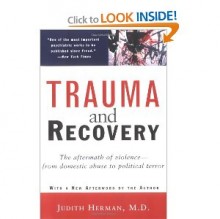 For anyone interested in the healing of childhood trauma, I strongly recommend you read, The Boy Who Was Raised as a Dog: And other Stories From a Child Psychiatrists Notebook by Bruce Perry and Maia Szalavitz. Here is a description of the book from the back cover:
For anyone interested in the healing of childhood trauma, I strongly recommend you read, The Boy Who Was Raised as a Dog: And other Stories From a Child Psychiatrists Notebook by Bruce Perry and Maia Szalavitz. Here is a description of the book from the back cover:
‘What happens when a child is traumatized? How does terror affect a child’s mind—and how can that mind recover? Child psychiatrist Bruce Perry has treated children faced with unimaginable horror: genocide survivors, witnesses to their own parents’ murders, children raised in closets and cages, the Branch Davidian children, and victims of family violence.
In The Boy Who Was Raised as a Dog, he tells their stories of trauma and transformation. Dr. Perry clearly explains what happens to the brain when children are exposed to extreme stress. He reveals his innovative methods for helping ease their pain, allowing them to become healthy adults. This deeply informed and moving book dramatically demonstrates that only when we understand the science of the mind can we hope to heal the spirit of even the most wounded child.’


 ‘WE SHALL REMAIN was created to address the effects of historical trauma in our tribal communities. Many times, these untended wounds are at the core of much of the self-inflicted pain experienced in Native America. Much like fire, this pain can either be devastatingly destructive or wisely harnessed to become fuel that helps us to rise up and move forward in life with joy, purpose and dignity.’
‘WE SHALL REMAIN was created to address the effects of historical trauma in our tribal communities. Many times, these untended wounds are at the core of much of the self-inflicted pain experienced in Native America. Much like fire, this pain can either be devastatingly destructive or wisely harnessed to become fuel that helps us to rise up and move forward in life with joy, purpose and dignity.’ Bessel van der Kolk is one of the world’s leading experts on trauma and the healing of trauma. His book
Bessel van der Kolk is one of the world’s leading experts on trauma and the healing of trauma. His book  This blog post was submitted by Wazza Jones for
This blog post was submitted by Wazza Jones for  Here is an excellent description of how colonialism impacted upon a young Aboriginal Australian as summarised by Richard Broome in his seminal book
Here is an excellent description of how colonialism impacted upon a young Aboriginal Australian as summarised by Richard Broome in his seminal book  I continue the series of films made by Mike Liu and I when we spent a day with
I continue the series of films made by Mike Liu and I when we spent a day with  I first became interested in Aboriginal culture and in Indigenous healing after reading Judy Atkinson’s wonderful book
I first became interested in Aboriginal culture and in Indigenous healing after reading Judy Atkinson’s wonderful book 


 As some of you know, I was inspired to work in the healing trauma field in large part by Judy Atkinson’s wonderful book
As some of you know, I was inspired to work in the healing trauma field in large part by Judy Atkinson’s wonderful book 

 During the many years I spent working in the addiction and mental health field, first as a neuroscientist and later helping empower people to facilitate their recovery (healing), I rarely heard the word ‘trauma’ being used.
During the many years I spent working in the addiction and mental health field, first as a neuroscientist and later helping empower people to facilitate their recovery (healing), I rarely heard the word ‘trauma’ being used.




